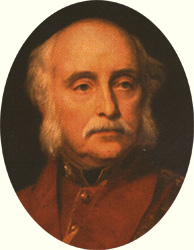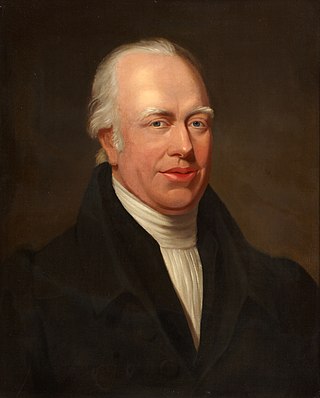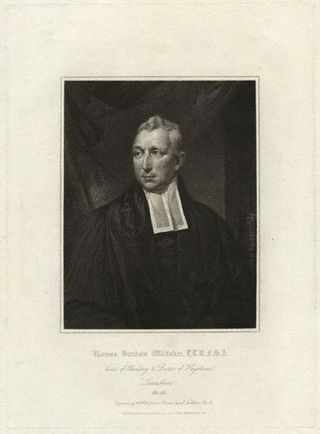Life
Bingley was born at Doncaster, and left an orphan at an early age. In 1795 he entered Peterhouse, Cambridge, and took the degree of B.A. in 1799, and of M.A. in 1803. Whilst an undergraduate he travelled in Wales in 1798. [1] [2] He made the first rock climb there of Clogwyn Du'r Arddu, with Peter Bailey Williams, the first British and documented climb of its kind. [3] [4] [5]
For many years after ordination Bingley served the curacy of Christchurch, Hampshire. In 1816 he was the minister of the Fitzroy Chapel, Charlotte Street, London; he was engaged in its ministry at the time of his death. He died in Charlotte Street, 11 March 1823 aged 49, and was buried in a vault under the middle aisle of Bloomsbury Church. He was a fellow of the Linnean Society, and led a quiet life. [1]
Works
Bingley was a prolific writer, and several of his works were popular. His Tour round North Wales, the result of his college vacation of 1798, was published in 1800 in two volumes. He revisited the district in 1801, and in 1804 issued North Wales ... delineated from two excursions. A second edition appeared in 1814, and a third, with corrections and additions by his son, William Richard Bingley, in 1839. As a companion to these works there appeared a volume entitled Sixty of the most admired Welsh Airs, collected by W. Bingley, arranged for the piano by William Russell in 1803, and again in 1810. [1]
One of the most popular of Bingley's compilation was Animal Biography (1803), on natural history. The sixth edition appeared in 1824, and the work was translated into several European languages. A related volume Memoirs of British Quadrupeds, appeared in 1809. His Practical Introduction to Botany was published in 1817, and republished after the author's death in 1827. In 1814 he drew up a volume on Animated Nature, and two years later he compiled a work on Useful Knowledge, an account of the various productions of nature, mineral, vegetable, and animal, frequently reissued with the seventh edition appearing in 1862. [1]
One set of Bingley's works was composed of "biographical conversations"; he narrated the lives of 'British characters,' 'eminent voyagers,' 'celebrated travellers,' and 'Roman characters.' Another consisted of condensed accounts "from modern writers" of Africa, South America, North America, South Europe, North Europe, and Asia, in six volumes appearing between 1819 and 1822. They were reproduced with a general title-page of Modern Travels. [1]
A planned county history of Hampshire took up much of Bingley's time; it had backing from Brownlow North. [6] In 1817, when the manuscripts amounted to 6,000 pages, he had to explain the delay to subscribers. Thirty copies of a small portion of it, The Topographical Account of the Hundred of Bosmere, were printed for private circulation. [1]
Bingley's dictionary of Musical Biography appeared anonymously in 1814; it was reissued with his name on the title-page in 1834. At Christchurch he published (1805), from the originals in the possession of a Wiltshire lady, three volumes of Correspondence between Frances, Countess of Hereford, and the Countess of Pomfret, 1738-41. Most of the copies of the second edition were destroyed by fire. He also wrote a sermon on the Economy of a Christian Life (1822), and a handbook to the Leverian collection. [1]

John Aikin was an English medical doctor and surgeon. Later in life he devoted himself wholly to biography and writing in periodicals.

George Combe was a Scottish lawyer and a spokesman of the phrenological movement for over 20 years. He founded the Edinburgh Phrenological Society in 1820 and wrote The Constitution of Man (1828). After marriage in 1833, Combe devoted his later years to promoting phrenology internationally.
William Stewart Rose (1775–1843) was a British poet, translator and Member of Parliament, who held Government offices. From a Tory background, he was well-connected in the political and literary world, and made a mark by his championing of Italian poets and a burlesque style of verse based on their influence as satirists.

General Sir Charles William Pasley was a British soldier and military engineer who wrote the defining text on the role of the post-American Revolution British Empire: An Essay on the Military Policy and Institutions of the British Empire, published in 1810. This text changed how Britons thought their empire should relate to the rest of the world. He warned that Britain could not keep its Empire by its "splendid isolation". Britain would need to fight to gain its empire, and by using the colonies as a resource for soldiers and sailors it grew by an average of 100,000 square miles (260,000 km2) per year between the Battle of Waterloo and the American Civil War. Serving in the Royal Engineers in the Napoleonic Wars, he was Europe's leading demolitions expert and siege warfare specialist.

Adam Clarke, an Irishman, was a Methodist theologian who served three times as President of the Wesleyan Methodist Conference, and of the Irish Conference. A biblical scholar, he published an influential Bible commentary among other works. He was a Wesleyan.

Richard Lalor Sheil, Irish politician, writer and orator, was born at Drumdowney, Slieverue, County Kilkenny, Ireland. The family was temporarily domiciled at Drumdowney while their new mansion at Bellevue, near Waterford, was under construction.

Thomas Scott (1747–1821) was an influential English preacher and author. He is principally known for his widespread work A Commentary On The Whole Bible, for The Force of Truth, and as one of the founders of the Church Missionary Society.

Francis Needham, 1st Earl of Kilmorey, known as Francis Needham until 1818 and as The Viscount Kilmorey from 1818 to 1822, was an Anglo-Irish soldier and Member of Parliament.
John Debrett was an English publisher and compiler. His name has become associated with reference books.

Sir Richard Phillips was an English schoolteacher, author, publisher and vegetarianism activist.
Stephen Weston was an English antiquarian, clergyman and man of letters.
Henry John Todd (1763–1845) was an English Anglican cleric, librarian, and scholar, known as an editor of John Milton.
Hugh Nicholas Pearson (1776–1856) was an English cleric, Dean of Salisbury from 1823. He was connected with the Clapham Sect.
Richard Duppa (1770–1831) was an English writer and a draughtsman.

Thomas Dunham Whitaker (1759–1821) was an English clergyman and topographer.
Henry Moses was an English engraver. He was born at Marylebone and died at Cowley, Middlesex.

Hugh Murray FRSE FRGS (1779–1846) was a Scottish geographer and author. He is often referred to as Hew Murray.
Francis William Blagdon was an English journalist and author.

Charles Peter Layard, F.R.S., D.D. was Dean of Bristol from 1800 until his death.
This page is based on this
Wikipedia article Text is available under the
CC BY-SA 4.0 license; additional terms may apply.
Images, videos and audio are available under their respective licenses.
![]() This article incorporates text from a publication now in the public domain : Stephen, Leslie, ed. (1886). "Bingley, William". Dictionary of National Biography . Vol. 5. London: Smith, Elder & Co.
This article incorporates text from a publication now in the public domain : Stephen, Leslie, ed. (1886). "Bingley, William". Dictionary of National Biography . Vol. 5. London: Smith, Elder & Co.









